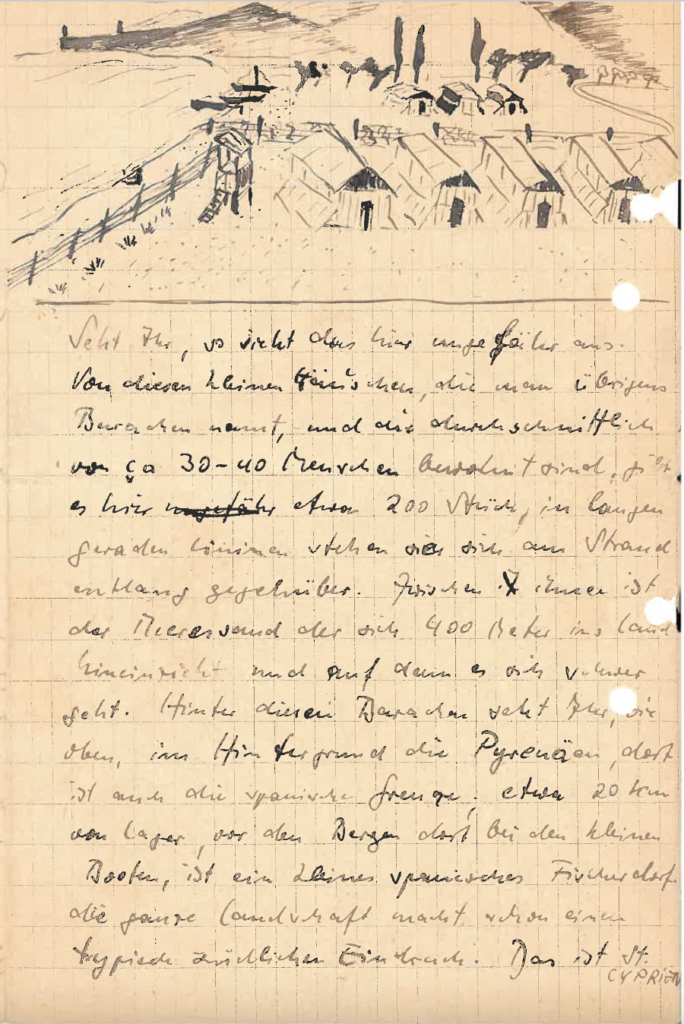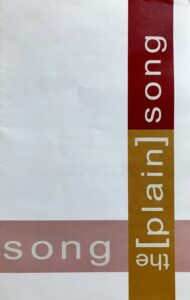Translation
Hugo Segal Papers
Through the Program in Jewish Studies at CU Boulder, I have been given meaningful opportunities to use my German-language skills toward making accessible the experiences of Jewish life (both contemporary and historical) and strengthening Jewish communities in Colorado. Translating the Hugo Segal collection is one of my current projects that contributes to this work.
Hugo Segal (1921 – 1942) was born in Vienna and grew up in Berlin—where his family moved to when he was a young child. At an early age, he showed a particularly strong interest and talent with drawing. When Hugo turned seventeen and wanted to leave the country with his best friend to pursue art school in Belgium, his parents supported his decision. In the summer of 1940, many German Jews and political refugees were deported from Belgium to internment camps in southern France. Hugo was detained in France with several other artists, and later in German-occupied Poland. Between 1940 and 1942, he was able to send messages via the Red Cross to his family, who remained in hiding in Berlin. Below is an excerpt from one of Hugo’s longer letters, written from Saint Cyprien in October of 1940.

Seht Ihr, so sieht das hier ungefähr aus. Von diesen kleinen Häuschen, die man übrigens Baracken nennt, und die durchschnittlich von ca. 30–40 Menschen bewohnt sind, gibt es hier etwas 200 Stück, in langen geraden Linien stehen sie sich am Strand entlang gegenüber. Zwischen ihnen ist der Meeresstrand, der sich 400 Meter ins Land hineinreicht und auf dem es sich [–] geht. Hinter diesen Baracken seht Ihr, [–] oben, im Hintergrund die Pyrenäen, dort ist auch die spanische Grenze. Etwa 20 km von Lager, vor den Bergen dort bei den kleinen Booten, ist ein kleines spanisches Fischerdorf. Die ganze Landschaft macht schon einen typisch südlichen Eindruck. Das ist St. Cyprien
As you can see, this is roughly what it looks like here. There are about 200 of these little houses, which, by the way, are called barracks, that are inhabited by an average of about 30–40 people and stand in long straight lines along the beach. Between them is the seashore, which extends 400 meters inland and on which [—]. Behind these barracks you can see, [—] above in the background, the Pyrenees. The Spanish border is also over there. About 20 km from the camp, in front of the mountains, there by the small boats, is a small Spanish fishing village. The whole landscape gives a typical southern impression. This is Saint-Cyprien.
the [plain] song
“Mörike the Poet” was a project that involved 50 translations and a pre-concert lecture for the [plain]song Music Festival: Hugo Wolf’s Mörike-Lieder. The first set of concerts took place in November of 2010 at St. John’s Episcopal Church in Jamaica Plains and at Endicott College Performing Arts Department in Beverly, MA. The second set of concerts were held in December at these same locations.
My translation of Zitronenfalter im April (a recording is linked in the first image above) was later published in MAYDAY Magazine.
![the [plain] song singers](http://mmrosenau.buffscreate.net/wp-content/uploads/2022/06/Singers.jpg)
